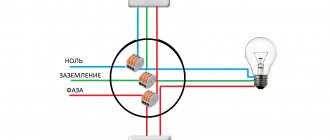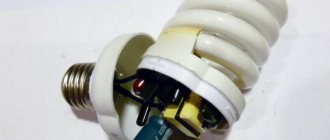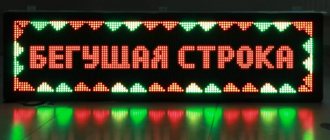LED lighting is now much more affordable, so it is becoming very popular. It has many advantages over incandescent light bulbs: longer service life, environmental friendliness, safety, high brightness and reliability. Although LED bulbs are more expensive than traditional incandescent bulbs, they are worth the cost. Moreover, you can independently extend their service life. In this article, we'll look at how to modify LED light bulbs to make them as efficient as possible.
The principle of constructing LED light bulbs
A non-isolated driver is common. In this case, the circuit is based on a pulse-step-down converter, and this has many advantages:
- LED light bulbs with a non-isolated driver are superior to capacitor ballast circuits in terms of output current stability. In addition, pulsations are completely absent.
- The use of a non-isolated driver maximizes efficiency. This means that the output voltage is much higher than that of linear or isolated drivers. This effect can be achieved by using LEDs that have several crystals in the housing instead of one large one - they reduce the current, but increase the voltage.
- Also, circuits with a non-isolated driver are cheaper in cost and more compact in size than with an isolated or linear one. This happens because the inductor used does not absorb all the power, which cannot be said about transformers in similar drivers. For this reason, circuits with a non-isolated driver require less material to produce, which means the cost of the product decreases.
Please note: when working with drivers, be very careful! If handled incorrectly, there is a risk of electric shock!
How to connect LED to 3 or 5 Volts
Low-power LEDs function well if they are connected to a power supply with a voltage of 5 or even 3 volts. Resistance is calculated using the same formula, but the resistor is replaced by a driver. It loses less voltage; you can buy a ready-made one in the store.
The most popular power source for making 5-volt strips that are used as nightlights is chargers from old mobile phones. The bulbs should be connected in parallel (series connection requires 6 volts).
3 volts can be obtained from a 1.5 volt battery using a special microcircuit. It can increase both current and voltage. In the second option, the diode must be connected to a resistance.
Interesting! A ready-made Chinese board can be bought for 100 rubles; it increases the battery voltage.
How to disassemble an LED light bulb
Of course, before you start upgrading an LED light bulb, you need to disassemble it. This is done very simply, but you need to know some nuances. The body of such light bulbs is made of composite and plays the role of a heat sink, and a diffuser is fixed around its perimeter with latches and silicone material. To remove the diffuser cap, you need to carefully trim the sealant in a circle. After this, the cap can be removed, but it will take a little effort - it fits tightly.
Difficulty may arise with a board with diodes. There are several ways to fix it: pressing or screwing. In the second case, everything is simple, but working with pressed-in boards is more difficult. Try to carefully remove the board using a screwdriver without damaging the case. This can be difficult, but if a piece of plastic breaks off, don't panic: if necessary, it can be glued back in place at the end. The board contacts are either soldered or made removable.
After you have removed the board, you need to deal with the wires coming from the lamp base. They do not allow you to remove the driver, because during production the light bulb is assembled in the reverse order. We need to free one of the pins. To do this, pull out the central contact coming from the base and cut off the other. During the assembly process it will need to be made longer.
Results
In conclusion, the following considerations need to be taken into account when connecting ultra-bright LEDs:
- the most important parameter of an LED is its operating current;
- energy is uselessly dissipated on quenching resistors;
- by using a serial connection, you can reduce losses while simultaneously reducing the number and power of resistors used;
- in the car’s on-board network there is not 12 volts, but somewhat more, and for reliable operation of the connected light-emitting diodes, this factor must be taken into account.
Having remembered all the above connection aspects, you can easily power any LED, in any quantity, from any 12 Volt DC power source.
LED light bulb device
Next, we need to familiarize ourselves with what parts an LED light bulb consists of and what they are needed for. The operation of the current is influenced by several parameters. Firstly, this is the service life of the product, on which the price of the light bulb depends. Secondly, temperature and energy consumption patterns.
As a rule, a break in the LED circuit leads to damage to the light bulb. If it stops shining, first of all you need to inspect the failed LED: a small black dot will be visible on it.
As the light bulb operates, the crystals in the LEDs heat up and expand. The current leads are very thin and made of gold. This is the most suitable metal: it is durable, ductile and does not collapse during use of the light bulb. However, the expansion of crystals is different from the expansion of other materials from which the product is made, which leads to deformation of the conductive leads. Therefore, in old light bulbs that have already been turned on and off many times, the circuits break.
Sometimes one large crystal in LEDs is replaced with many small ones. This design not only reduces the impact of temperature, but also increases the supply voltage of the LEDs.
How to correctly connect a diode to a car's electrical circuit
The diagram for connecting LEDs to a 12-volt car battery is no different from the diagram for any other power source that has the same voltage. One of two methods is used - through a resistor or through a stabilizer (special chip). However, it is necessary to take into account that the voltage of 12 volts is a conventional value. More often it is 14 V and even more (up to 17 V). The jumps are due to the lack of a stabilizer in the car. When making calculations, you need to insert exactly these numbers into the formula.
Extending the life of an LED light bulb
First we need to reduce the current passing through the LEDs. In addition, we will also increase their efficiency, and this will make the temperature of the crystals lower. As we have already figured out, the lower the temperature, the lower the risk that the conductive terminals will be damaged. Efficiency increases because as the current decreases, the brightness of the bulb becomes less. Thus, we can significantly increase the service life of the LED bulb. To do all this, we will need to find the current sensor on the board. To do this, we are looking for a resistor or a pair of them, which are connected in parallel with a resistance measured in Ohms. Finding them will be easy because these resistors are present in all types of drivers.
Then there are two ways. We can either install another resistor with a higher resistance, or unsolder one of the existing ones. Remember that the current passing through the LEDs is proportional to the resistance of the sensor resistor: the higher it is, the correspondingly lower the current.
If the value of the current passing through the LEDs and the power of the lamp decreases quite a bit, this will still help greatly extend the life of the light bulb, because the heating of the crystals in the LED will be much less than the heating of the product body. Thus, it will be possible to reduce the effect of temperature on the conductive terminal.
The more expensive the light bulb, the more LEDs it has that operate at low current. Also, the power of such products is lower than that of cheap light bulbs. LEDs operate in a gentle mode, which is why expensive LED lamps have a long service life.
It is recommended to reduce the power by 30% - this will be quite enough if the light bulb is new. However, if you are upgrading an already used lamp, it is better to reduce the power to 50%. When there is one burnt-out LED, all the others, following it, will also soon begin to burn out. Unless the power is greatly reduced, such a light bulb will not be able to work for long. Of course, to extend its service life, you can change all the diodes, but this is not always possible.
A little theory
An LED is characterized by two main parameters: the rated forward current and the forward voltage drop measured at that current.
Both values are nominal and based on them we can draw a conclusion about the power consumption of the LED. By smoothly increasing one of the parameters (for example, voltage), you can use a multimeter to record the second parameter (current). The result will be another important parameter inherent in any diode - the current-voltage characteristic (volt-ampere characteristic). It is nonlinear and clearly proves that even a slight excess of the rated forward voltage leads to a sharp increase in current and, consequently, to degradation of the semiconductor crystal.
In addition, all light-emitting diodes have a low reverse voltage (about 5 V).
Therefore, before turning on the LED for the first time, you need to re-check that the polarity is correct. To protect the LED from reverse polarity, you can install a conventional diode with a high reverse voltage in parallel with it.
Make a smooth increase in brightness when turned on
This modification is very relevant, for example, in a bedroom or children's room, when you want to gradually increase the brightness of the lighting. Turning on will last about 30 seconds. We will need to connect a posistor (this is an electronic component that plays the role of a heater and temperature sensor) in parallel with the LEDs. A posistor is also called an RTS thermistor.
The desired effect is achieved as follows: in a cold posistor the resistance is minimal. Current flowing through several LEDs heats it up, thereby increasing the resistance. As the resistance increases, another part of the LEDs is included in the circuit. This is how a gradual increase in brightness is achieved.
Pay attention to the resistance of the posistor used. It should be between 330-470 Ohms. You can find these in energy-saving lamps with a power of 32 W.
What do we change for what?
Halogen (halogen?) lamp. Halogen lamps operate on the principle of incandescent lamps. In them, light is emitted by a hot tungsten filament. The internal cavity of the flask is filled with a special chemical composition that prevents rapid wear of the spiral and failure of the product.
In everyday life, they are powered by 12-24 volt current sources. They are used in conjunction with electronic converters (transformers) that reduce the voltage to the required value.
Low voltage halogen lamp 12V and spotlight for it
LED bulbs. These are assemblies made from an array of semiconductor elements that can glow under the influence of electric current. All emitters are connected in series-parallel with each other and are designed for certain power parameters.
LEDs operate only on direct current. In order to adjust a standard household network to the specified values, special electronic devices are used - drivers.
LED lamp with g4 socket
Making a night light with reduced brightness
In addition to a night light, a low-brightness light bulb can be screwed into a sconce. This can be convenient in many cases: for example, some children are afraid of the dark and ask to leave the night light on at night. Too bright light interferes with sleep, and bulbs like these are a great solution. They can also be screwed into sconces in the bedroom or into a chandelier in a room where too much light is not required.
Here you will need to improve the driver, unsolder one resistor on the driver board and solder another one with a power of 1 W, parallel to the current-carrying terminals. You will also need to equip the switch with a resistor with a resistance of 68 kOhm and a power of 1 W. We install it parallel to the contacts. Please note that after this the light bulb socket will be energized.
The operating principle is simple. The voltage is divided between two resistors, which reduces the voltage from the power supply to the lamp. The current passes through a resistor divider and LEDs. The brightness of the lamp is affected by the resistance of the resistors.
Sometimes it may be necessary to install an additional 100 kOhm trim resistor to prevent the lamp from flickering. It must be placed in parallel with the ceramic power filter capacitor. It is necessary to ensure that the lamp does not start with reduced brightness. In normal mode, it should work as usual. A night light that has an upgraded bulb with the resistors specified consumes approximately 0.42 W. If the switch is turned on, the lamp will operate normally. However, its power will increase by the value dissipated by the resistor, which we soldered to the conductive terminals of the microcircuit.
Modernization of LED lamp circuits can significantly expand their functionality, making them much more convenient to use than incandescent light bulbs. You can also easily increase their service life, which makes them also profitable. The most important thing is to approach this matter carefully, not forgetting about safety.
How many diodes can be connected to a 12 V network?
The question arises of how many LEDs can be included in such a circuit so that the power is not wasted on heat. A lot actually. A certain number of diodes are used to create serial chains that are connected to one voltage-damping element.
To calculate the resistance, the formula is used: R=(Upit. – nUd)/Id, where n is the number of lamps.
To connect to a car battery, it is advisable to use chains of 3 elements (or a multiple of three: 6, 9, 12). On three diodes, the voltage will drop by 10.5 V (on average), the resistor will receive 1.5 V.
To connect 4 elements, they need to be grouped in pairs, each of them powered through a resistor and connected in parallel.
Important! To increase the accuracy of calculations, calculators available on the Internet are used.
Lighting principles
The lighting device is used to illuminate a whole room or a separate area. This is the basic principle of building light. Light affects the perception of the interior of the house. The light falling from the lamps must perform the following tasks:
creating a suitable atmosphere for work; correct lighting of interior details for a decorative effect; focus a person’s attention on the advantages of the room and hide its disadvantages; illuminate specific places for personal needs.
The location of the light source is of great importance for the distribution of illumination. A lamp in the center of the room provides radial illumination. The center will be clearly visible, but the corners will remain in the visual twilight zone.
The distribution of point light sources throughout the apartment or house allows you to provide light in any corner of the room
This method makes it possible to focus attention on specific objects. Local lighting has many useful properties, and table lamps help fill the lack of lighting
A table lamp allows you to illuminate certain areas of the room with high quality. This is an additional light source that is used for reading or working. They are also good as a night light.
Common Mistakes
LEDs will gradually fail, since the operating current is different for each
Craftsmen often make mistakes when installing LEDs. The most relevant of them:
- Connecting light bulbs directly without a resistor. In this case, the diodes simply burn out.
- Making a parallel connection using one resistor. Such an error threatens the gradual failure of all light bulbs. After all, each has its own operating current.
- Incorrectly selected resistor. In this case, too much current passes through the bulbs, which again leads to them burning out. If the resistance is high, the elements will not glow bright enough.
- Performing a series connection with different current consumption. There are two options here - the lamps will glow with different brightness intensities, or those designed for a lower current will burn out.
- Connecting ice lamps to a network with alternating current 220 without using a diode or other protective components. A voltage of 315 V is supplied to the light bulb, which instantly leads to its combustion.
If you take these errors into account and connect the LEDs correctly, the decorative lighting that the master decided to install at home will work for a long time and properly.
Making a simple microwave field detector
Categories: Science, Reviews
Making a 2.4 GHz Wi-Fi amplifier
Homemade Wi-Fi antenna made of paper and foil
Simple LED lamp repair
Firmware and modification of iMAX B6 up to 200w
Are you wondering which of your mobile phones has the most powerful transmitter, is there a transmitting antenna at the bottom or top of your smartphone, is it horizontal or vertical, what emits more from a microwave or a phone?
We suggest you make a simple detector of electromagnetic microwave radiation with your own hands. This detector is also useful in setting up and comparing the characteristics of different transmitters and antennas, allowing you to determine whether a signal is transmitted in horizontal or vertical polarization, etc.
Common Mistakes
LEDs will gradually fail, since the operating current is different for each
Craftsmen often make mistakes when installing LEDs. The most relevant of them:
- Connecting light bulbs directly without a resistor. In this case, the diodes simply burn out.
- Making a parallel connection using one resistor. Such an error threatens the gradual failure of all light bulbs. After all, each has its own operating current.
- Incorrectly selected resistor. In this case, too much current passes through the bulbs, which again leads to them burning out. If the resistance is high, the elements will not glow bright enough.
- Performing a series connection with different current consumption. There are two options here - the lamps will glow with different brightness intensities, or those designed for a lower current will burn out.
- Connecting ice lamps to a network with alternating current 220 without using a diode or other protective components. A voltage of 315 V is supplied to the light bulb, which instantly leads to its combustion.
If you take these errors into account and connect the LEDs correctly, the decorative lighting that the master decided to install at home will work for a long time and properly.











